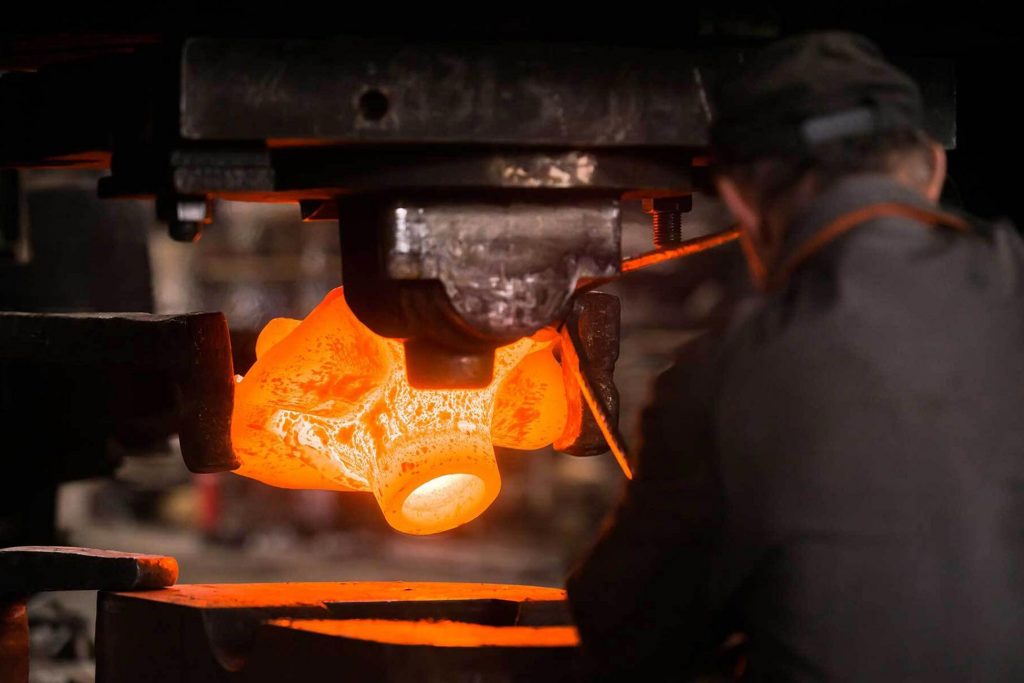Forging manufacturing is a method that includes pounding, compressing, or kneading metallic to shape it. A hammer or die is used to apply forging meaning such compressive stresses. The warmth regularly classifies forging. It incorporates warm, bloodless, or warm forging.
Forgings may be almost any form, reducing the requirement for numerous components to be joined. In addition, because the forging doesn’t must be forging meaning welded or otherwise linked, lowering the junction might also decorate the general strength of the component.
WHAT ARE THE DIFFERENCES BETWEEN FORGINGS AND CASTINGS?
Forging’s production is a totally long-lasting method. Castings will not offer the identical degree of power as cold and hot forgings. However, forging outperforms casting in terms of predicted strength features and creates higher resistant and ductile parts, having steady quality at some stage in the product cycle.
Forging smoothes out flaws in cast ingots and continuously solid bars. The casting technique cannot keep away from developing sure metallurgical defects as it lacks grain glide nor directional balance-pre-working forge stock results in grain glide this is orientated in the instructions that require the maximum energy. Forging refines alloy segregations, forging meaning dendritic formations, and different defects.
Forgings offer brief and cost-powerful responses to changing marketplace situations. Spectacular overall performance casting, for instance, necessitates more forging meaning luxurious product and equipment controls, in addition to lengthier lead–time. On the other hand, forging strategies like open-die and ring rolling reply to specific production run lengths and allow for shorter lead instances.
WHAT ARE THE DIFFERENCES BETWEEN FORGINGS AND WELDMENTS/FABRICATIONS?
Forgings provide fee discounts and material efficiency. In huge production runs, welded fabrications are a good deal extra high priced. Fabricated additives, in flip, are a frequent purpose of forging conversions as manufacturing stages upward push. Forging equipment costs can be offset by means of extended general manufacturing and cloth performance. In addition, the forging meaning producing economics of Forgings decrease hard work costs, rework. And scrap by decreasing inspection expenses.
Forgings are greater durable. Porosity isn’t unusual in welded buildings. Improper welding or connecting approach will negate the sturdiness profits made by way of welding or attaching well-known rolled gadgets. In addition, forging achieves grain alignment, which results in more giant pieces.
Forgings have higher metallurgical traits and are more uniform. Welding produces undesired metallurgical features, which include such uneven grain shape due to selective non-uniform cooling and heating. A welded cap may function a reduce in usage, contributing to component failure. Interior cavities in forgings can induce sudden loss under effect or pressure.
Forgings make matters greater efficient. Mechanical and welding fastening can increase manufacturing prices by means of nicely choosing becoming a member of substances, attaching kinds and sizes, and thorough monitoring of tightening techniques. Forging streamlines manufacturing even as enhancing great and uniformity.
WHAT IS THE DIFFERENCE BETWEEN FORGINGS
Forgings provide a greater complete choice of sizes and fabric characteristics. Steel bar and plate items are restricted in shape and length to the parameters wherein those additives are provided. Forging is regularly the sole metalworking method that could produce exact traits in preferred dimensions. Forgings can be made in an extensive sort of sizes, together with pieces with the most quantity of less than 1 inch to ones weighing over 450,000 kilos.
For extended energy, forgings are grain orientated to shape; on account that machining alters grain styles, mechanized plates and bars are extra prone to fatigue and anxiety corrosion. However, for maximum occasions, forging produces a grain shape aligned with the part’s outside curves, main to most suitable flexibility, energy, surprise, and fatigue resistance.
Forgings lessen scrap and improve manufacturing efficiency. Forgings, mainly close-to-net forms, make extra use of resources and bring less waste. Forgings get a significant value gain in high-quantity production runs.
Forgings necessitate fewer post-processing steps. To eliminate the surface imperfections and achieve required first-rate, machinability, dimensional accuracy, and sturdiness, sure classes of plate and bar require additional techniques, together with grinding, turning, and sprucing, as provided. Forgings can regularly be placed into operation without the need for high-priced secondary methods.
Conclusion
Forging is absolutely extraordinary from other approaches to pound and shape metals. If you understand definitely what forging is, you could without difficulty recognize that’s the first-class manner in order to work on metallic. If you are not professional enough, it helps you would are searching for the help of expert forging organizations. When choosing a forging company, you need to select a complete-carrier, devoted group that can offer high-quality services. There is probably an entire bunch of options inside the market however the quality ones are supplied by an expert and able engineering team.
house of forging
what is forging
metal forging
power hammer for forging
forging meaning
